



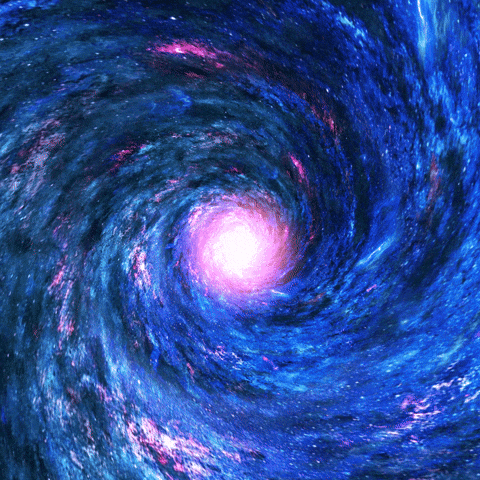
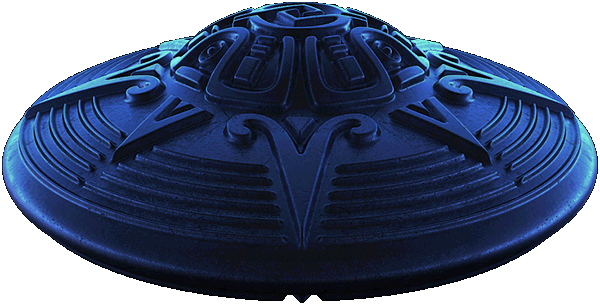

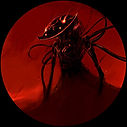
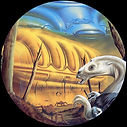

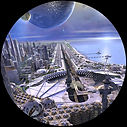

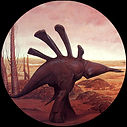

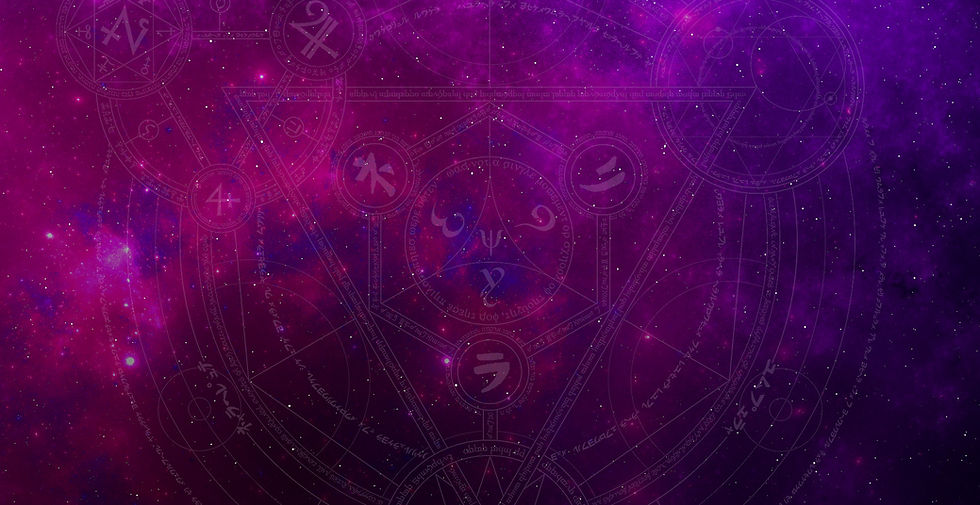
PROJECT BLUE BOOK - UFO CASES
The TOP SECRET Air Force UFO Detection Plan
"Mid-March 1952:AF Intelligence (AFOIN) Assistant for (Intelligence) Production Brig. Gen. William M. Garland initiated a TOP SECRET compartmented project (to be designed and built by AF R&D) to establish a global instrumented UFO detection and tracking system that would obviate the need for non-technical anecdotal UFO sighting reports, eventually resulting in approval of an official AF policy to deemphasize or reject anecdotal UFO reports (July 28, 1952)."
Decades before MADAR was even thought of, the United States Air Force had a Top Secret plan to detect UFOs and obtain electronic as well as photographic information. We first discovered this Top Secret project while updating the 1952 chrono in 2005 and thought the idea was for the Air Force to simply eliminate anecdotal accounts from witnesses and eventually get rid of Project Blue Book. But I personally consider another real possibility that, with Roswell being a real event and UFOs now being accepted as real, it made sense that the Air Force wanted to keep better tabs on UFO activity, especially after the sobering massive UFO wave of 1952.
By Fran Ridge
The UFO Chronicles
8-31-23
At least as early as January 3rd, 1952 somebody in the Air Force clearly demonstrated the knowledge of the problem and reality of UFOs. It is my opinion that the Pentagon knew of the reality as early as Roswell in the summer of 1947 and that's when the cover-up began. But that's another story. What you are about to read here is supported by documentation, some of which will be provided later in 2022.
Project Grudge (2/11/49), which had replaced the original Project SIGN (1/22/48), had publicly denounced the reality of the phenomena for those first years. But that all changed when Project Blue Book replaced Grudge in September of 1951. But there was more to it than just Blue Book. It was higher than that.
January 3,1952, SECRET Memo
Brig. Gen. William M. Garland, Assistant for the Production of Intelligence, wrote a memorandum (above) for General Samford, Director of Air Force Intelligence, with the title (SECRET). The subject, "Contemplated Action to Determine the Nature and Origin of the Phenomena Connected with the Reports of Unusual Flying Objects." (Courtesy, Joel Carpenter)
Jan 29, 1952–Captain Edward Ruppelt, Project Blue Book's director, on a trip to the Pentagon to brief Gen. Garland, visited the offices of AF Intelligence (AFOIN) having collections of UFO files, and discovered that they had more complete files than did ATIC in Dayton, and he arranged to have copies made of the various missing files made for him at Project Grudge at ATIC (though multiple visits were required to obtain the copies and Ruppelt probably did not succeed in getting everything). These AFOIN offices with UFO files included the Technical Capabilities Branch (TCB) of the Evaluation Division (AFOIN-TCB or AFOIV-TC) and the Collection Control Branch of the Collection Division (AFOIN-CC or AFOIC-CC). (Brad Sparks)
The best reports going somewhere else was suspected (and understandable) but this information precedes what we found in 1979 with the Bolender document in 1979. It amounted to confirmation of a long-standing suspicion: Project Blue Book served as a front for a classified project that handled the truly sensitive reports. The memo was prepared on October 20, 1969 by Brig. Gen. C. H. Bolender, the Air Force's Deputy Director of Development. It was clear: UFO sightings that involved national security were not part of the Blue Book system!
Now with that serious backdrop, here is where we get into a Top Secret project that will surprise a lot of people
There was a briefing mentioned in Project Grudge Status Report No. 3. It mentioned that Brig. Gen. William M. Garland, Assistant for (Intelligence) Production, and his staff at the Directorate of Intelligence, HQ USAF, were briefed on the status of the Project Grudge UFO Study. At this meeting Gen. Garland introduced a revolutionary new intelligence policy and methodology which emphasized the use of instrumentation for intelligence collection, including to detect and track UFO's (which would eventually be the basis for terminating Project BLUE BOOK as an intelligence function, converting it to a PR psych war propaganda function beginning in July 1952 over a 6-month transition period - Brad Sparks).
As an interim last-chance measure to prove whether anecdotal sightings had any value, Gen. Garland approved of Ruppelt’s publicity plan to draw in UFO reports from the public so that triangulations might be obtained, and this led to Garland secretly backing the LIFE magazine article.
On the same date, Jan. 29, Gen. Garland gave the welcoming address to the SECRET compartmented MIT Project BEACON HILL in Cambridge, Mass., where he gave the marching orders to the assembled scientists to study ways AF intelligence methodology can be revolutionized through use of technology.
Mid-March 1952– AF Intelligence (AFOIN) Assistant for (Intelligence) Production Brig. Gen. William M. Garland initiated a TOP SECRET compartmented project (to be designed and built by AF R&D) to establish a global instrumented UFO detection and tracking system that would obviate the need for non-technical anecdotal UFO sighting reports, eventually resulting in approval of an official AF policy to deemphasize or reject anecdotal UFO reports (July 28, 1952). (Brad Sparks)
March 19, 1952–Ruppelt briefed General Benjamin W. Chidlaw, then the Commanding General of the Air Defense Command, and his staff, telling them about Blue Book's plan. They agreed with it in principle and suggested that he work out the details with the Director of Intelligence for the ADC, Brigadier W. M. Burgess. General Burgess designated Major Verne Sadowski of his staff to be the ADC liaison officer with New Grudge.
March 26, 1952–Gen. Garland sent ATIC Technical Analysis Division Chief, Col. Sanford H. Kirkland, and Project Blue Book Chief, Lt. Edward J. Ruppelt, to brief MIT's Project BEACON HILL on UFO's. (Brad Sparks)
April 4, 1952–Gen. Garland arranged for the AF-Rand Corp. Satellite Project to receive a UFO briefing from Ruppelt on a visit to ATIC. Ruppelt met and befriended Rand satellite engineer, Jim Thompson. (Brad Sparks)
June 5, 1952–AF Intelligence initiated a series of internal Staff Studies on UFO's, inspired by Gen. Garland's new policy emphasizing instrumentation, which was circulated within AFOIN and its field element ATIC. Staff Studies led to policy and project plan approved by Director of Intelligence, Gen. Samford, on July 28. (Brad Sparks)
July 10-17, 1952–Dr. Kaplan Visits ATIC Project Blue BookUCLA Geophysics Prof. Joseph Kaplan, a member of the AF Scientific Advisory Board previously involved with a highly secret compartmented UFO tracking project in 1949 leading to Project TWINKLE, visits ATIC and Project BLUE BOOK, advising on plans for a top scientific panel to establish the importance and credibility of the UFO problem within the scientific community (a later distorted version of the plan is forced on the CIA by the AF as the Robertson Panel and intentionally designed by the AF to fail spectacularly). The Battelle Memorial Institute scientists are deemed not prominent enough to secure support within the scientific community, but will continue with statistical studies of BLUE BOOK's case files (ordered by Gen. Samford in Dec 1951 to specifically verify Ruppelt's sighting pattern analysis, showing UFO concentrations around atomic weapons bases, after his briefing disturbed Samford). Battelle also continues special lab analyses of alleged UFO physical evidence from time to time. (Brad Sparks)
Oct. 23, 1952–RadTelex. A Blue Book UFO briefing for the entire Los Alamos Scientific Lab. Afterwards Dr. Crew pulled together a group of Los Alamos personnel to meet privately with Ruppelt and Col. Bower to discuss radiation UFO evidence and info they had from (Mt.) Palomar, Los Alamos, and Oak Ridge on possible and actual UFO radiation incidents there. (See also Dec. 2 memo)
Nov. 4, 1952–Capt. E. J. Ruppelt and Lt. R. M. Olsson visited Col. Hood, Chief of Nuclear Powered Aircraft Branch of WADC. Col. Hood had contacted ATIC in regard to certain sightings of UFO's at Oak Ridge National Laboratory in which he and a Naval officer had attempted to obtain correlation between sightings and peaks in radiation backgrounds. There are indications that there may be some correlation present between unknown radar pickups and rises in radiation
Dec. 15, 1952–Memo for the record. Capt. Ruppelt's call to Homer T. Gittings, Jr. concerning visual sightings of UFOs and radiation of unknown sources, reference to Mt. Palomar. A Mr. W. W. Carter of Los Alamos, New Mexico, was the person who knew people at Mt. Palomar who had seen unidentified aerial objects at the same time they had detected some radiation.
December 23, 1952–Letter from Office of Naval Research, Pasadena Branch to Chief of Naval Research. Details on old report of unusual phenomena concerning erratic (geiger counter) equipment behavior at Palomar.
Dec. 29, 1952–Preparation for trip to Los Alamos, N.M., and the West Coast. Capt. Ruppelt had called Lt. Col. Paul H. Butman, Division of Military Applications, Atomic Energy Commission, Washington, D.C. Col. Butman had previously been briefed on the possible correlation between detection of radiation from unknown sources and unidentified flying objects by Capt. Ruppelt during a visit to AEC. Col. Butman was requested to contact Los Alamos laboratories and request that Mr. Carter, Mr. Gittings, and Mr. Simmons come to Albuquerque for an interrogation.
Jan 9, 1953–SECRET letter to Miles Goll from H. C. Cross (PENTICLE MEMO) describing a largescale military plan recommended to ATIC to entrap UFOs to secure evidence at high incident areas. This just a week before the CIA-sponsored meetings of Jan 14-16.
My search for data in the NICAP chronos took me to 1970 without any mentions of the plan after January 9th, 1953. So I asked Brad if we had missed something that wasn't placed on the chronos and if the project had gone more covert.
He told me the Air Force project became more sensitive and higher in classification. He suspects there are broken links in the 1969-70 chronos, like on the Bolender Memo and BB closure that may have more data. He also thought he might have some entries in 1959-63 chronos on documents referring to UFO incidents "bypassing the BB system" long before the phrase was used (reused) in the Bolender Memo in Oct 1969. Col Friend confirmed to him in March 2000 that this meant UFOs tracked by classified sensor systems BB was not privy to. The CIA "Father of Satellite Reconnaissance" former CIA Deputy Director for Plans, Richard Bissell told him that plans for infrared satellite tracking of UFOs were in development in the 50s early 60s when he was in satellite work at the CIA.
In Aug 1956 long before he came to NICAP, Dick Hall heard over the radio a leaked AF report that two satellites (actually two types) would be used to track UFOs. This was probably the greatest leak of classified UFO info in all history but its significance was missed by Hall and others who kept trying to force this report into the irrelevant and pitiful grapefruit-sized public Vanguard satellite plans, unaware that the relevant classified AF plans were for massive multi-ton 20-foot satellites. In 1955-56, Lockheed and RAND realized that the one type of satellite, the TV camera version (going back to Gen Garland March 1952), was impossible because it required massive data rates and could not image moving aircraft or UFOs -- even today this is impossible. The second type, the infrared sensor satellite, was viable because it looked for hotspot heat sources and only transmitted that highly relevant data, ignoring the irrelevant cool earth background which was massively repetitive and useless. The infrared sats became operational in 1970 enabling the AF to finally close BB. There was also continental-sized radar beam coverage by OTH (Over The Horizon) radars transferred to NORAD in 1968 (not the limited 200-300-mile range of typical NORAD radars, but OTH of lower resolution and with other issues. (Sparks).
So, nothing in the NICAP data after January of 1953? Well, that's what we had thought until I found some additional, and very important information which I had mentioned in my most recent book, "Cap Point". We have to thank, Australian researcher, Paul Dean, and American researchers, Barry Greenwood and Brad Sparks for the following blockbuster information. I had mentioned in my book that it was unfortunate that we did not have a more comprehensive list of UFO sightings from Vietnam along with case directories and case summaries as we did for sightings in Korea, but the many sightings in Vietnam strongly suggested there was a potential for an escalation that might have lead to a nuclear confrontation with the super powers. UFO reports were consistently being collected and investigated, in various forms, with the primary purpose being to determine whether or not these events were related to enemy activity. Often they were not. So far, from just a few reports Paul Dean found, Brad Sparks compiled some stats on about 500 UFO Sensor Trackings by Radar-Visual, Laser Range-Finder, Video Camera, Night Scope, and Infrared in 1968-69.
Sparks: "Except for 2 probable helicopters shot down, on June 16 & 17, 1968, this network was completely unable to identify any of the other 500 tracks or so.The stats are an incredible 99.6% Unknowns, IFO's 0.4%. To help the IFO cause so to speak, a conservative guestimate of maybe 5 IFO's in the uncertain early phase in mid-June 1968 would make this 99% Unknowns, 1% IFO's, a devastating statistic. These are from INSTRUMENT SENSORS. No more hopeless reliance on mere human anecdotal evidence. The 7th AF history clearly states it was about "UFO's" NOT about helicopters, it only began initially with "unidentified helicopters" as of around June 15-16, 1968. But it took a deadly turn with the friendly fire of anti-aircraft missiles hitting a ship (Aussie HMAS Hobart) instead of aircraft (helicopters). Then they realized it was UFO's...Now we have two brand new codenames for UFO sensor tracking networks: HAVE FEAR and LETHAL CHASE."
At this point it is important to bring up a few incidents that occurred BEFORE 1952. Most researchers are aware of some of them, but NOT aware that they involved a planned, deliberate, top secret program.
Late Aug. 1947?; Alamogordo [Holloman] Army Air Field, New Mexico–Document evidence shows that the secret program to track and image UFOs began at least in August of 1947, a month after Roswell, Someone knew where to look for an object 200 miles up! We don't know the time but, AMC Watson Labs Project MOGUL tracked a stationary target at 200 miles altitude using a modified CPS-4 height-finder radar aimed at 70° elevation. Normally CPS-4 requires a crew of 6 operators so there may have been other witnesses. (Incidentally, the report was deliberately leaked out by the Air Force). Project SIGN sent two high-level investigators, but the prime witnesses were conveniently not available. The CPS-4 radar had been specially "modified" for the specific purpose of extending its 90-mile range to some 250 miles and to point it almost straight up into outer space to look for targets -- and then it did exactly that. It was a long time before we were able to put satellites up that high, and they had to orbit at 18,000 mph. This object HOVERED at that altitude!. We always assumed UFOs were being seen by civilians and ALSO members of the military. Now we know that the Navy and the Air Force were actively making an effort to see them and record data from the outset.
1949 Army UFO Tracking Network–Brad Sparks provides (see right)led description of the 1949 Army UFO Observation Plan. Briefly, since Captain Ruppelt claimed that “many people” knew and talked about the Army plan with him it is evident that many people would also have known it was actually tracking UFOs, generating reports and leaving a paper trail through Army and Air Force intelligence, security and R&D channels. Brad Sparks: " So 'many' people undoubtedly heard a lot through the grapevine inasmuch as a wide variety of agencies, including the FBI, AEC/AESS, AFSWP, AFOSI, and even the Navy, were involved in regular classified briefings on the UFO events in Texas and New Mexico." Ruppelt publicly had claimed the plan was killed. But he could not honestly claim not knowing about the Army network’s UFO sighting reports in his own Project Grudge files, which of course prove that the Army network was very much alive. As Ruppelt said on page 56 of his own book, "The Report on Unidentified Flying Objects", “The [Army] reports were getting to ATIC.” Sparks: "On June 23, 1949, Air Force Director of Intelligence Gen Charles P. Cabell’s exec wrote 'By Command of the Chief of Staff' to AMC/Project Grudge that the Fourth Army’s Proceedings of the UFO History Workshop 44 May 19 request for AMC to send a technical observing team to Killeen Base was approved 'as a field exercise.' The Air Force not only knew that the Fourth Army was establishing a secret UFO triangulation observation network, but that it was already in operation, and so the Air Force authorized AMC/Grudge to notify Air Force Bases in the vicinity to spread the word!
April 27, 1950; White Sands, New Mexico film–In his book, Ruppelt claimed that there was no triangulation conducted in the “impressive” White Sands Proving Ground cine-theodolite case. According to him, only one theodolite tracked the UFO (pp. 52, 88-9, 212-3). See Brad Sparks detailed explanation on pages on page 44-45 in the link above. Ruppelt: “About all the film proved was that something was in the air and whatever it was, it was moving” (p. 88). As Brad makes clear, two Askania theodolite stations, M-7 and P-10, did track the UFO on April 27 and the base mathematician, Wilbur L. Mitchell and Capt. Perry Bryant, chief of the Data Reduction Unit. effected triangulation. Sparks: "This proves that Ruppelt knew about their analyses of the two filming incidents. In fact, Ruppelt had in his Grudge files the original data reduction report of May 15, 1950, which revealed that in the April 27 incident the four close-together UFOs had been tracked by two missile-tracking stations, P-10 and M-7, one taking missile-tracking photo-theodolite movie film of all four UFOs together, and so they did get an accurate triangulation, which revealed: “The objects were at an altitude of approximately 150,000 feet... over the Holloman range between the base and Tularosa Peak... The objects were approximately 30 feet in diameter... traveling at an undeterminable [sic], yet high speed.” Despite the fact that Ruppelt had read all the reports and even spoke about the analysts involved, he then falsely claimed, “If two or more cameras photograph the same object, it is possible to obtain a very accurate measurement of the photographed object’s altitude, speed, and size. Project Twinkle was a bust. Absolutely nothing was photographed." (p. 52). It has been proven beyond a doubt by documentation that film, including triangulation, was obtained on April 27, 1950. And again on May 24 and Aug. 31.
The evidence is clear. While the Air Force publicly played down UFOs, up until the time Project Blue Book was shut down in January of 1970, serious top secret work was being conducted. In the very beginning Project SIGN scientists were purged out because they were "believers". Project Grudge hired personnel who were trained and operated under the consensus that "whatever you see or hear, don't believe it". But as you saw earlier, somebody just didn't want the public to know about it but yet needed the public to report what the systems were picking up.
The most recent find concerning UFO detection occurred during Operation Foal Eagle in South Korea in 2003. This may have been a discovery that was later used in a detection mode, but it sure made it clear how UFOs were coming and going. I later published a list of vertical ascents and descents from Blue Book files. All this seems to confirm how our MADAR system works in the first place. Objects come in or leave in a burst of energy. But they can operate IN our atmosphere under idling conditions.
The civilian attempts to track UFOs began with Project Starlight International in Texas (1964). The detection system I developed at Vincennes, Indiana (1970) later became known as MADAR at Mt. Vernon, Indiana in 1973 and was moderately successful. These singular attempts were ramped up to the world-wide MADAR-III system which my team made operational in 2018 which now operates at 120 sites around the globe, including a dozen foreign countries. The idea from day one was similar to the Air Force Plan in 1952 in which we make every attempt possible to solicit sightings from the public in our attempt to correlate potential sightings of interest with processed MADAR anomalies. In the last three years we have been very successful.
The MADAR Project incorporates a magnetometer, an electronic compass, and an accelerometer, but we encourage ops to invest in a geiger counter based on what happened at Mt. Palomar in the 1950's and what occurred with MADAR and the "WOW!" Signal on August 15, 1977.
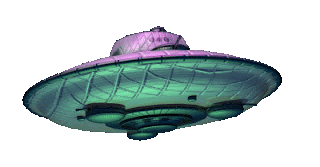



SECRET BACKGROUND DETAILS AND HISTORY OF THE US AIR FORCE
INTELLIGENCE'S INVOLVEMENT WITH THE FAMED LIFE MAGAZINE UFO
ARTICLE OF 1952: USAF CONSIDERS SHOOTING DOWN A UFO WITH A MISSILE

TWO extraordinary documents found in the US Air Force Directorate of Public Relations archives belie the contention that government officials always considered the UFO problem as nothing more than a nonsense issue which only required minimal effort and public assurance that everything was under control. Recounted within these documents are the briefings of a researcher for LIFE Magazine — one of the most powerful media outlets at the time — wherein an Air Force general officer discloses that the USAF considered trying to shoot down a UFO with a missile.
The importance of these findings should not be lost in the sometimes cryptic and intricate maze of confusing official military nomenclature and procedures. Some clarity about the significance of the material may be read at the conclusion of this article.
The first step in the official overture from the US Air Force to involve mainstream press interest in the UFO subject was taken at an off-the-record meeting in the Pentagon on February 27, 1952. There LIFE magazine researcher Robert Ginna met with the number two man in the USAF Directorate of Intelligence, Brig. Gen. William M. Garland.
The resulting article "Have We Visitors from Space?" in the April 7, 1952 issue of LIFE magazine vaguely alluded to the shoot-down plan, saying that "interceptions" would be attempted and "if the opportunity offers, attempts will be made to recover such unidentified objects."
The LIFE article triggered worldwide publicity and interest in UFOs. It generated comments from the public and within official channels on how to best investigate UFOs, including using instrumentation to gather scientific data utilizing the ideas the Air Force expressed in the article.
Tom Tulien of the Sign Oral History Project requested an interview with Robert Ginna in 2009 concerning the April, 1952 LIFE magazine article "Have We Visitors from Space?" Unfortunately, Mr. Ginna declined due to scheduling issues and his feeling that the events were all well in the past.
The magazine article stands on its own merits, but exact circumstances about the origin and history of the research for the article will probably never be known.
Besides these two documents, official records do shed light on some of the aspects of the creation of the article. It is also possible to place some of the events in the context of known UFO history.
The official responses and activities planned for Mr Ginna's proposed research mission were documented in official sources. These ranged from the formerly Top Secret 1952 USAF Directorate of Intelligence history, Project Grudge/Blue Book Status reports edited by Capt. Edward J. Ruppelt, and Ruppelt's unofficial account of his tenure at Project Blue Book, his 1956 book, The Report on Unidentified Flying Objects. Other references were located in the USAF Public Information files on UFOs 1948-April 1952.
As researcher Brad Sparks has pointed out, LIFE magazine's research probably began in mid-1949, but went dormant for a time after TRUE magazine "scooped" them with Keyhoe's sensational article "The Flying Saucers Are Real," in December 1949.
Reprising the title of his popular TRUE article, Donald E. Keyhoe's 1950 book, "The Flying Saucers Are Real", alludes to another major magazine's competitive research efforts and the pressure to publish first. There are also vague allusions to LIFE doing some research at this time.
The research for the LIFE article began or resumed sometime in late 1950 or early 1951. During Ginna's investigations he gained extraordinary access to US Air Force and Atomic Energy Commission (AEC) installations and personnel. It would seem that some high ranking individual or individuals facilitated these visits, heavily influenced by LIFE's worldwide reputation.
Many UFO researchers point to Brigadier General William Garland as the likely facilitator here. Garland came to the Directorate of Intelligence (DI) in November 1951 and within a few months became keenly interested in the UFO problem when his superior, the Director of Intelligence, Major General Samford expressed an interest. However, this does not explain who might have aided Ginna prior to Garland's tenure at the Directorate. Such access would probably require the influence and authority of at least a Lieutenant General.
Brigadier General William Madison Garland
The USAF Information Office made arrangements for Mr. Ginna to visit Air Technical Intelligence Center (ATIC) at Wright-Patterson Air Force Base on 22 June 1951. Ruppelt described the visit in his book, relating that it was obvious that the intelligence people who briefed the reporter did not impress him with their knowledge or command of the subject.
Ruppelt recounts in his book that the official attitude to UFOs began to change after Ginna's visit. In September 1951 a military UFO incident involving radar and aircraft at Fort Monmouth, New Jersey became public knowledge. A review of the incident at the Directorate of Intelligence (DI) revealed that both the investigation and analysis of the incident were poorly conducted and inadequate to the task. A more thorough and revitalized investigation was ordered by the Director of Intelligence, Major General Cabell, on October 2, 1951.
The "reborn" Project Grudge was formed and reorganized on October 22, 1951, with a brand new project chief.
Unlike Project SIGN, none of the regular staff members at ATIC were appointed to the project. Instead, a newly graduated aeronautical engineer and enlisted veteran of World War II who was a recently commissioned First Lieutenant in the US Air Force Reserve was designated to head the new project — Edward J. Ruppelt.
Captain Edward J. Ruppelt
Ruppelt was assigned to a major's billet which was highly unusual considering his rank. He arrived at ATIC in January 1951 but did not receive an interim Top Secret clearance until January 1952. Perhaps his selection indicated that no "old timer" civilians wanted to be associated with the UFO project.
Those who had been assigned to intelligence at Wright-Patterson knew some of the analysts on the original project had been terminated, with the last to go being Alfred Loedding, "the initiator of Project Sign." (After Loedding's separation from the Air Force, he easily found work with the Navy and later returned to Wright-Patterson in another capacity.)
New policies and directives on UFOs started to flow out of AF Intelligence Directorate's office in Washington. It was decided that copies of UFO reports would be sent to the Navy, Army, CIA and other agencies.
One such new action in December 1951 involved Mrs. Helen Barber, managing editor of the classified internal publication, "Air Intelligence Digest" at DI, who began a study of UFOs and the Air Force UFO project for the Directorate. Her project was completed in June 1952 and has yet to be located. She was involved in several UFO investigations and other such activities at DI.
Between 4 and 14 January 1952, Mrs. Barber traveled on Temporary Duty (TDY) from DI to ATIC to gather material on UFOs. Ruppelt does not mention her visit in his status reports.
Sometime in early 1952 Ruppelt did prepare an article on unusual objects reported in the sky before 1947 for the Air Intelligence Digest.
He made a number of trips to the Pentagon on July 21-22 and 28-29, to coordinate plans for the article. (Among other things during these visits, he was confronted by the two weekends of the Washington National Airport sightings. Strangely, he was initially shut out of the investigations of the Washington National incident.) Ruppelt's article was never published, but the draft is in the Project Blue Book files.
While on her January visit to ATIC, Brig. General Garland further tasked Mrs. Barber and others to summarize German experimental and prototype unconventional aircraft developed during World War II and their possible use by the Soviets. The project started on 9 January and was to be completed by 25 January.
This was part of a bigger effort involving UFOs that Brig. Gen. Garland wanted, including the dispatch of three teams each from the Air Defense Command (ADC) and ATIC to take radar and visual photographs of UFOs in places where there had been numerous reports. (The results of this tasking is unknown.)
On January 29, 1952 two different incidents occurred in the Korean war zone. Two B-29 bombers, one flying over Wonsan and the other over Sunchon, observed bright orange, globe-shaped objects moving parallel to their planes. The report of two independent sightings by crew members of two different bomber squadrons at two different locations arrived at ATIC as a Secret message.
On the 1st of February, a request was sent for more information forwarded through DI in Washington to the Far East Air Force.
On the 4th of February, Lt. Col. Ray W. Taylor at ATIC sent a message to Brig. Gen. Garland (AFOIN-A), Assistant for Production at DI. Taylor suggested several possible solutions for the Korean sightings including "fireballs" or "foo-fighters", a phenomenon which he said had never been completely explained.
The Air Force and the new Project Grudge were not prepared for the publicity resulting from such a major UFO incident and was caught by surprise when someone leaked details of the Korean sightings to the press. On the 19th of February the story appeared in the newspapers without the usual Air Force denial that there was anything to UFOs. The press, in fact, pointedly called the public's attention to the lack of such denial.
At this time, new public information policies on UFOs and the Air Force revitalized investigations consisted of tentative discussions and ideas with no finalized directives. The furor caused by the leak of the sightings from the Korean war zone caused decisions for the release of public information to be made on the fly.
A dispatch from Tokyo on the 20th of February reported B-26 crews seeing “strange looking orange globes” in night flights over Korea. Air Force spokesmen in Tokyo and in Korea refused comment, stating the information was "classified." (No such B-26 reports are found in the Project Blue Book files.)
The Alsop brothers were quick off the mark with a column, soberly covering the incidents and possible security implications.
On the 21st of February Senator Richard B. Russell, Chairman of the Senate Armed Service Committee, wrote to the Secretary of the Air Force requesting a full report on the Korean UFO sightings.
The 22nd of February edition of the Pacific "Stars and Stripes", the official newspaper published for troops overseas, contained a statement from Lieutenant General (later General) Otto P. Weyland about the B-29 "globe" sightings. In a dispatch from Tokyo, dated February 21, General Weyland stated that “no conclusive evaluation had been made at the present time” about the sightings. He added that the reports made by aircrews of observations made during missions provided important information on enemy tactics and equipment.
Lieutenant General Otto. P. Weyland
On the 25th of February, Senator Russell's letter was forwarded to the Director of Intelligence with a request for a reply before March 4. Mrs. Barber found herself among the DI personnel who were to come up with a response for the Senator. Ruppelt, while actively involved in gathering information on the Korean incident, was excluded from the analysis and answer for the Senator.
The investigation, the analysis, the public statements, and official answer to the Senate Armed Service Committee showed the somewhat confused situation which the Korean incidents had caused. In the midst of all this official turbulence, Robert Ginna commenced his visit to Air Force headquarters on 25 February 1952.
From the Memos we know that Mr. Ginna — with the assistance of Brigadier General Sory Smith, Director of USAF Office of Information — met with General Joseph F. Carroll, Deputy Inspector General, and Director of Special Investigations. It is not known what was discussed, but the Office of Special Investigations (OSI) had maintained a professional attitude towards UFO investigation when the efforts by most other Air Force agencies were dismissive and investigations could be characterized as minimal. Ginna was most interested in the "green fireball phenomena" in the southwest.
He had previously met with Dr. Lincoln LaPaz, meteoriticist, at the University of New Mexico.
Dr. LaPaz had volunteered to work investigating UFOs and Green Fireballs with the 17th District OSI, formerly headed by Lt Col. Doyle Rees.
(Dr. LaPaz personally witnessed green fireballs and was the top astronomer referred to in LIFE Incident #2) Through General Carroll's office Mr. Ginna was allowed to interview Col. Rees who was then assigned to Washington, D. C. Ginna requested that Lt. Col. (later Major General) Dewitt R. Searles get him an appointment at Air Technical Intelligence Center (ATIC) at Wright-Patterson Air Force Base, Dayton, Ohio. Brigadier General William M. Garland, Assistant for Production, Directorate of Intelligence, coordinated the proposed visit and also scheduled an interview with Mr. Ginna before he left Washington.
Ginna met with General Garland on the morning of the 27th of February. Mrs. Barber and Lt. Col. Searles were also present. General Garland said he was interested in fostering a more positive attitude towards UFOs, inviting accounts from qualified observers.
Brig. Gen. Garland urged LIFE to hold off publication until more conclusive evidence became available, but it was obvious that Mr. Ginna did not intend to follow this suggestion. Brig. Gen. Garland did suggest an exchange of information with LIFE. He also revealed that the Air Force was issuing collection instructions, was planning to equip all-weather interceptors with cameras to photograph UFOs, and might make an attempt to shoot one down with a missile.
While the Army Nike-Ajax had undergone testing in 1952, it would not be deployed until 1954. It was further along in the procurement cycle than the Air Force missiles, but unless some extraordinary special preparation were accomplished, it was not ready to try to shoot down a UFO in 1952, as revealed in Brigadier General Garland's briefing of LIFE magazine researcher Robert Ginna in February 1952.
The Air Force was developing a long range radar-guided missile of its own, the Bomarc, which at the time of the meeting with Ginna was still months away from its first propulsion test firing in September 1952. Several years of development followed and the first USAF operational Bomarc squadron — 46th Air Defense Missile Squadron (ADMS) — finally came online on 25 March, 1959.
On March 3rd Ginna visited ATIC and met with Ruppelt. He brought with him sighting reports by highly qualified observers. LIFE magazine had representatives all over the world who could send in reports which they might be able to exchange with the Air Force.
Time magazine used some of the same material Ginna planned to use in an article in its Science section about the Korean B-29 incidents. Time also published the address of the Civilian Saucer Investigations in Los Angeles (CSI-LA), related the activities of Dr. LaPaz and White Sands' official interest in the green fireballs, and the Frank Scully story of a crashed saucer.
While the issue was cover dated for March 3rd, subscribers by mail usually received TIME and LIFE before the newsstand date.
On 5-10 of March Mrs. Barber visited the Time and Life editorial representatives in reference to articles on the subject to be published by the magazines. On 5th March, Lt. Gen. Weyland gave an interview published in the European "Stars and Stripes" of 6 March in which he implied that Russian pilots were flying in combat in Korea. The military, of course, was well aware they were fighting Russian pilots, but it was policy not to make it public. Lt. Gen. Weyland, who served with Patton during World War II, skirted the issue while indicating that that was the case. He also expressed skepticism over the earlier explanations that the cause of the B-29 sightings were the glow of aircraft exhaust, the answer given the Senator Russell.
On the 8th of March, Secretary of the Air Force answered Senator Russell's letter which included the DI conclusion that the B-29 crewmen had seen the exhaust glow from Communist aircraft. The conclusion was signed by General Nathan F. Twining, Vice Chief of Staff.
On 14 March two Navy planes flying 50 miles apart between Guam and Pearl Harbor, Hawaii, encountered two UFOs. The first plane, carrying Secretary of the Navy Dan Kimball, had two fast-moving discs approach and circle the plane twice before disappearing to the east. The next plane carrying the Chief of Naval Research, Arthur Radford, also encountered the discs which circled the plane and disappeared. Only the crews observed the UFOs, not the high-profile passengers. The sighting is not in the Project Blue Book files and was not made public until May of 1952.
In the aftermath of the incident, Secretary Kimball ordered a separate Navy UFO investigation project be instigated. The details and findings of that effort have yet to be located.
The LIFE magazine article was published on the 3rd-4th of April with the cover date of the 7th. It received coverage in hundreds of newspapers worldwide. ATIC received 110 letters as a result of the article while LIFE magazine itself had 700 letters. The Air Force archived many of these letters, eventually filling two microfilms. Since "foo-fighters" were mentioned in the article some veterans sent along their accounts, a selection of which are published here on Project 1947. Letters from other magazine articles are also represented on the microfilms. Incidents from 1952 and back to the 19th century are recounted in this collection.
Contributors to this essay: the late Robert Todd, information found utilizing a research grant, "UFOs and Government" provided by the Louis Farish Foundation, Robert Powell, Barry Greenwood, Brad Sparks, Isaac Koi, Dr. Michael Swords and John Stepkowski.
— Jan L. Aldrich
Footnote:
Excerpts from the formerly Top Secret History of the Directorate of Intelligence for 1952:
Mrs. Helen Barber, managing editor of the Air Intelligence Digest, visited Air Technical Intelligence Center, Dayton, Ohio, 14 to 24 January 1952, for the purpose of coordinating intelligence matters relative to report but [sic] unidentified airborne objects; she later proceeded to New York, 5-10 March for the purpose of discussing and coordinating matters with editorial representatives of LIFE and TIME magazines relative to articles scheduled to be published by these agencies concerning the above mentioned phenomena.
(The reference cited is "TDY (Temporary Duty) Records, Administrative files, Estimated Division")
From Appendix III, Historical Report of the Deputy Director for Estimates of the 1952 History of the Director of Intelligence (formerly Top Secret)
Mrs. H. H. Barber, managing editor, [Air Intelligence Digest] complete in June [1952] the special research assignment in reference to 'Project Bluebook' dealing with unidentified aerial objects which she had begun in December 1951.
(The reference cited is "Historical Report Fiscal Year 1952, Current Intelligence Branch, by Colonel Geoerder. [not seen])
We did try to find more about Mrs. Helen Barber, but like the Delaware Saucer Associates, an early UFO organization which Ruppelt did not like much, and the Flying Saucer Research Center of Amarillo, another early organization operating about the same time as Ruppelt's tenure at Project Blue Book, most leads have led to a dead end. — J.L.A.
Some Final Thoughts
A friend read this article. "What is the take away? I think I can see it, but some of what you are talking about is just too 'inside baseball' for me. Could you give me a few main points and then some shorter bullet points, or a few sentences so I can see what you're getting at?"
This is an entirely reasonable request. The path to understanding the history of the official handling of the UFO subject can be complex and beyond what many are familiar with, especially those who have read little background on the topic.
Here, then, is what I consider the major "take aways" from the LIFE magazine article:
First, the revelation that the Air Force was considering using a missile to shoot down a UFO. This certainly places the subject in a new light, far from the marginal nonsense problem as portrayed by some historians. Such a plan presumed they were not dealing with some "hallucination" or "optical illusion," but a solid, material object which could be shot out of the sky!
If the idea were more than a mere pipe dream, one would expect to find documentation discussing the possibility of implementing it. The most likely places to look would be the USAF Directorates of Intelligence, and Operations, the Assistant Chief of Staff for Operations, Research and Development activities, and the Ordnance Department — for which we only have a few hints of their interest and activities. Depending on how widely this idea might have been considered, records could also be located in organizations outside the Air Force.
Second, LIFE magazine did years of research on the UFO problem. Bob Ginna showed up at the Pentagon when Air Force Headquarters were in the midst of a hullabaloo over the leak of the twin UFO sightings over Korea, and a still unsettled Air Force public relations policy on how to handle UFO inquiries from the media. Ruppelt said the LIFE magazine piece was the best researched article written, except for the conclusion. LIFE had done much more research than appeared in its discussion of the ten incidents featured in its magazine article, and continued to investigate the subject for a number of years thereafter, especially during 1957. Unfortunately, none of this material is available to the public.
Third, after seven decades, UFO history remains incomplete, with many gaps compromising the amount of research material available for serious inquiry. Early UFO history consists of several books relating, in some cases, third and fourth-hand information. Much of the documentation still eludes historians. One of the most relied on sources is Edward Ruppelt, first chief of Project Blue Book. Even though an insider, Ruppelt only knew of many events preceding his tenure through second or thirdhand accounts.
New historical discoveries often find their way into the current history, shoehorned into the existing narratives without taking proper account of what they really reveal. The plethora of missing documents and reports include:
• Reports on unconventional German aerial vehicles which might been utilized by the Soviets.
• Results of ATIC and ADC teams dispatched to UFO hotspots.
• Mrs. Helen Barber's UFO study.
• Night-flying B-26 encounters with strange lights similar to the B-29 incidents reported in the press on 20 February, 1952.
• The official report of the UFOs buzzing aircraft carrying the Navy Secretary and other high ranking officials over the Pacific.
• Investigations and reports compiled and analyzed by the Office of Naval Research during the Navy's short-lived UFO project.
Fourth, Ruppelt, the newly minted Project Blue Book chief — the man who shook down former Project SIGN and Project Grudge members to obtain the UFO reports in their desks, who went to the Pentagon and hunted down UFO reports that had not been sent to ATIC, and who had a question on UFO encounters for debriefings of returning Korean aircrews — admitted that he knew almost nothing about unusual aerial encounters during World War II.
Loren Gross characterized Ruppelt as "the UFO data collecting superman," yet in both the LIFE and LOOK magazine articles, his book, and in his personal papers, Ruppelt professed ignorance of the World War II foo-fighters phenomenon. Had Ruppelt been more aware of the historical pedigree of UFOs, perhaps his investigations may have encompassed a wider field of inquiry.
The answers to the questions raised in this article are ripe for discovery, and the search will continue.






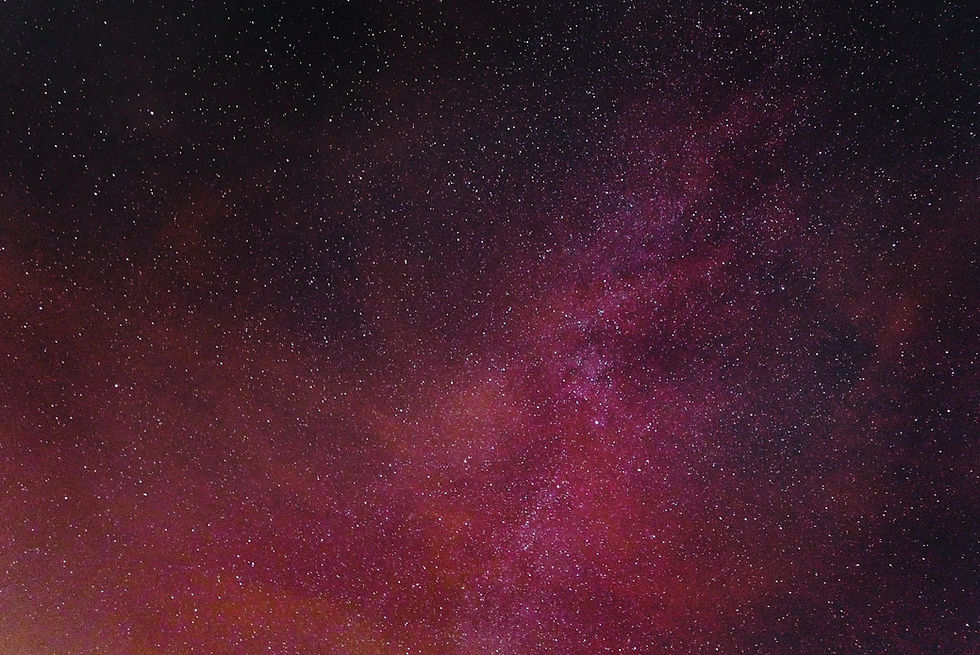
Multiple Anomaly Detection & Automatic Recording (MADAR)
Last month — Feb. 19, at 3:30 p.m. to be exact — Fran Ridge donned his UFO-detective hat after hanging it up more than two decades ago. He says the inspiration is the quasi-recent discovery of his unwitting link to the signal event of radioastronomy’s SETI program — the iconic “Wow!” moment.
Ridge’s platform is a geek’s dream called the Multiple Anomaly Detection and Automatic Recording or, more precisely, the MADAR-27. He operates this UFO early warning system out of his home in rural Mount Vernon, Ind. From an outsider’s POV, this rascal looks loaded.
Primed to acquire, record and display the sort electromagnetic data and compass-needle effects associated with UFO incidents dating back to the 1950s, MADAR-27’s tripwire is a sensitive magnet variometer, which runs 24/7. Upon sensing a fluctuation in the local environment, the system activates a mode-control panel that, among other things, alerts the operator, green-lights a Geiger counter, converts live electromagnetic readings to visual pulses, and archives the entire event.
Ridge, site coordinator of the NICAP web page, which includes voluminous raw UFO incident data, assembled and worked MADAR-27’s predecessor beginning in 1970. Adjusting for natural background effects, Ridge recalls how “Some people said it was so sensitive it’d be going off constantly, but that didn’t happen.” In fact, over 21 years, he was able to document 24 ostensibly unnatural events. He bailed in ‘91 and summarized his findings in an obscure 1994 book called Regional Encounters: The SC Files.
And that was all she wrote, at least until 2010. That’s when a colleague drew his attention to a fascinating coincidence involving Ohio State’s Big Ear Radio Telescope in Delaware, Ohio, some 310 miles from Mount Vernon, in the summer of 1977. On Aug. 15 that year, radioastronomer Jerry Ehman, volunteering in Big Ear’s Search for Extraterrestrial Intelligence, scanned routine printouts from the night before and skidded to a stop. He scribbled “Wow!” in the margins beside an apparent signal code from the hydrogen band that lasted 72 seconds, consistent with the coverage window afforded by Earth’s rotation. In the 2010 email, one Byron Weber informed Ridge the “Wow!” occurred at the same time MADAR was logging a more localized anomaly.
Ridge reviewed the data from 1977. A six-week span during that Son of Sam summer had been MADAR’s most productive period when, during a sighting wave, it recorded seven disturbances, the last of which involved a 3-minute, 29-second pulsebeat, beginning at 10:14 p.m., Aug. 15. The Big Ear dish clocked the “Wow” at 10:16 p.m.
After repeatedly failing to reacquire the signal, which initially appeared to emanate from the constellation Saggitarius, SETI suggested Big Ear got tripped up on Earth-based or space-debris clutter. But in 2007, Ehman had eliminated those suspects to his satisfaction and wrote “The origin of the Wow! signal is still an open question for me.”
Jazzed over the connection — MADAR also detected background radiation readings that were twice the normal levels for 8/15/77 — Ridge reached out to SETI in an effort compare notes. Results: predictable.
“They wouldn’t talk to me, and I can sort of understand that, they don’t want to get involved with ufologists,” Ridge says. “But I think they should’ve been interested in corroborating data because this wasn’t a UFO incident per se. The fact that they picked it up at the same time suggests the disturbance was spread out over a wide area.”
Anyway, Fran Ridge is back online now, and with MADAR-27’s digital technology humming along, its capacity is orders of magnitude better than its 20th-century predecessor. The system isn’t portable, but Ridge hopes to create a nationwide network at some point with the introduction of smartphone apps.
“This is an open-ended project,” he says. “I’m 71 years old now and I’m hoping something important happens. I think I’ve earned it.”
